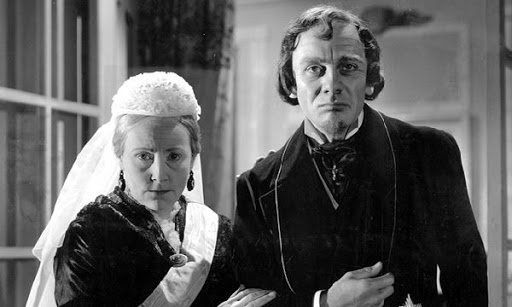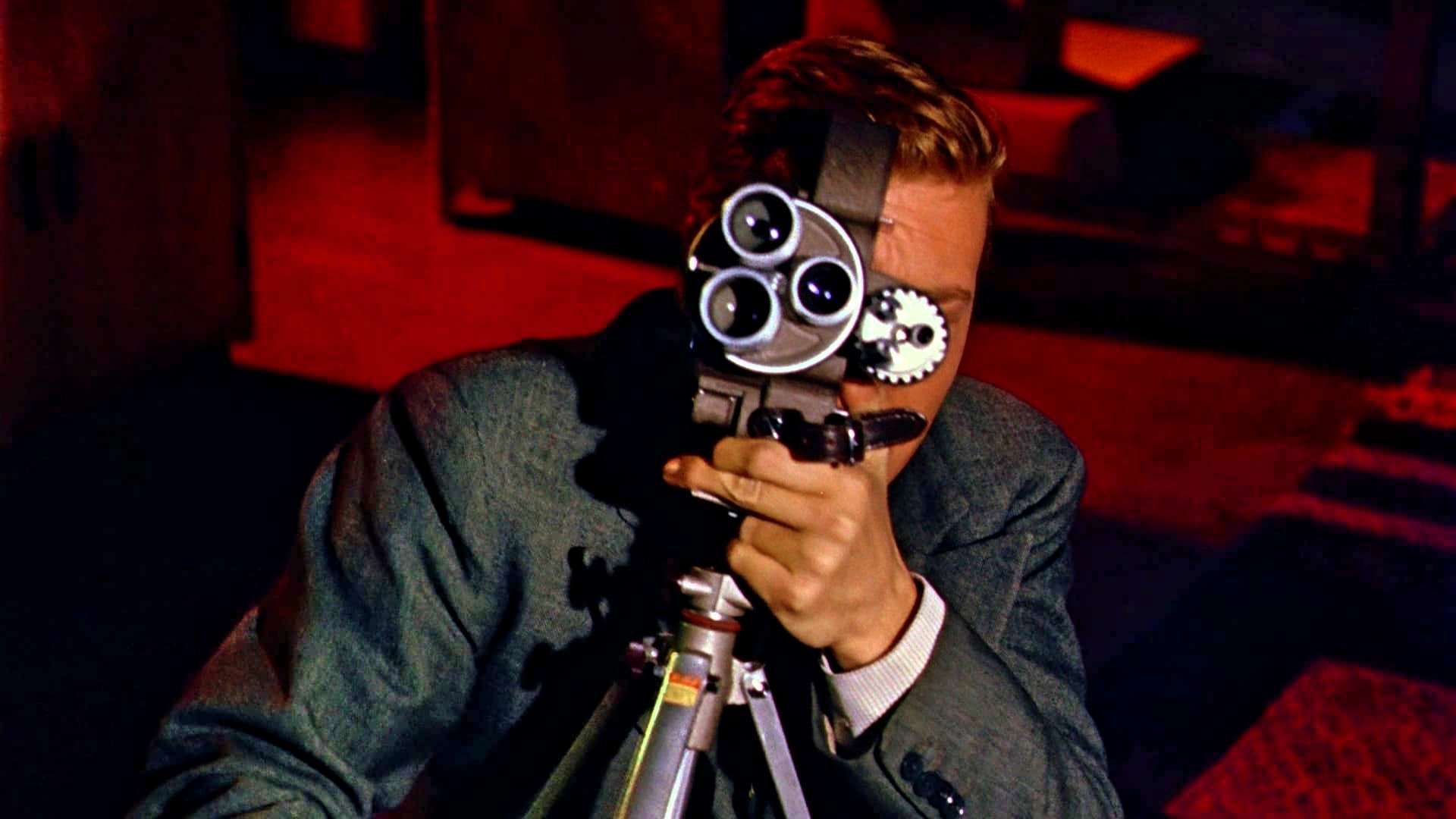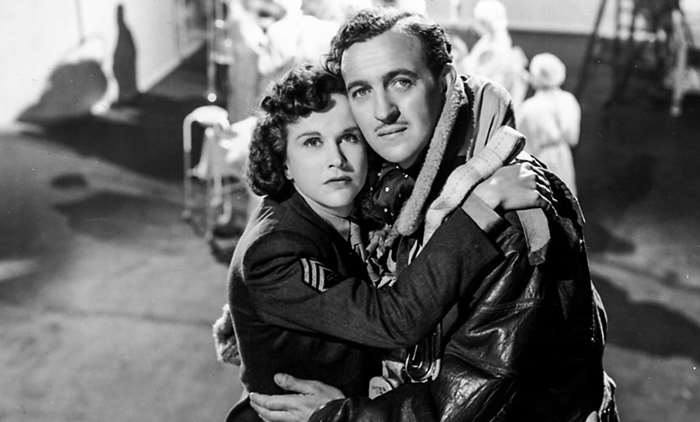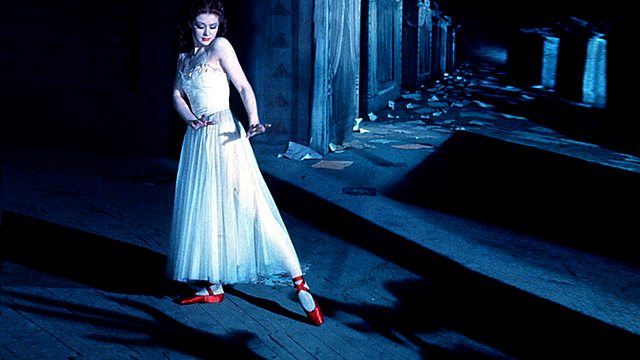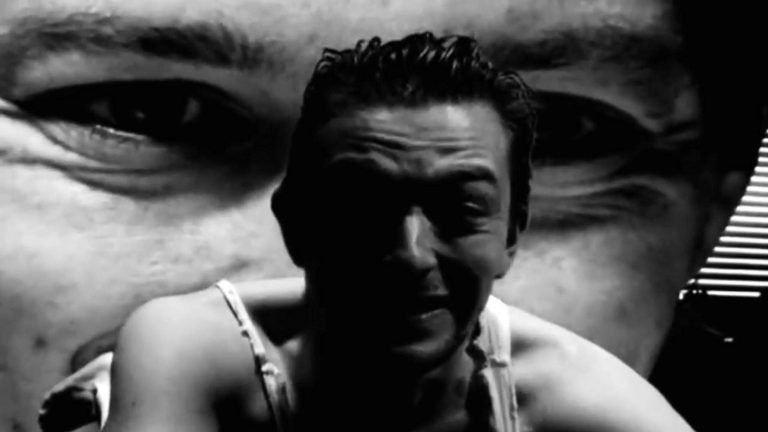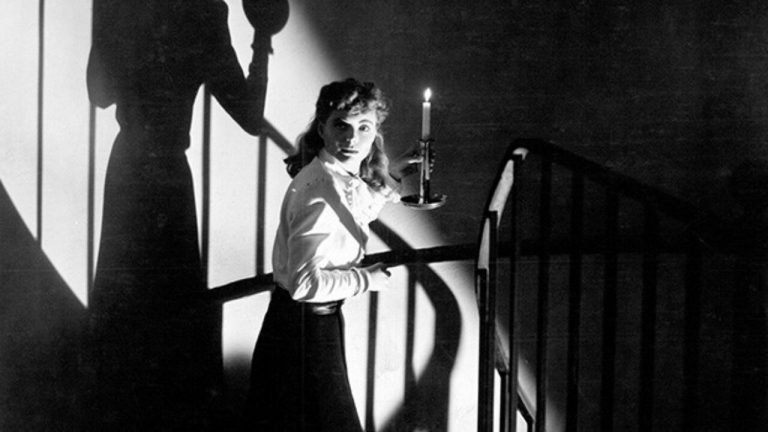This essay explores the work of Michael Powell as a romantic auteur aspiring to reconfigure the notion of national identity during the Second World War and the post-war years. Analyzing his films as part of the ‘lost continent’ (Petley) strain, it explores how Anglo-American relations in A Canterbury Tale (Powell and Pressburger, 1944) and A Matter of Life and Death (Powell and Pressburger, 1946) help develop a sense of Britishness that contrasts with the archetypal notions of nationhood of the realist tradition. It also considers how Black Narcissus (Powell and Pressburger, 1947) and The Red Shoes (Powell and Pressburger, 1948) stand apart from the realist and comic mainstream with highly stylized aesthetics and themes of romantic longing and spiritual crisis, relying on the writing of Scott Salwolke and Andrew Moor.
Since the 1930s, realist cinema has been the highest, most well-regarded strain of British filmmaking. Influenced by the documentary movement pioneered by John Grierson and Humphrey Jennings, the tradition reached its peak during the 1950s and ’60s, with the Free Cinema and the British New Wave movements. The gritty realistic style of films such as Saturday Night and Sunday Morning (Reisz, 1960), A Taste of Honey (Richardson, 1961) and This Sporting Life (Anderson, 1963) raised political and social issues faced by the working class, contrasting strongly with the traditional melodramas of the ‘quota quickies’ of the 1930s. Yet it was during the war years that realism really flourished in British cinema.
Since the Second World War was largely promoted as ‘the people’s war’ by the British domestic propaganda (Taylor, 1988, p. 2), the government encouraged a sense of national pride and national identity in films by using documentary techniques and pre-war documentary filmmakers to hybridize reality and fiction. The wartime propaganda films commissioned by the General Post Office Film Unit directed by the likes of Harry Watt, Alberto Cavalcanti, and Basil Wright helped popularise documentary films and brought a demand for the genre that led to more realistic wartime pictures, such as In Which We Serve (Coward and Lean, 1942) and Went the Day Well? (Cavalcanti, 1942).
Similar to Michael Powell – Rome, Open City [1945] Review – A Powerful Lament on the Quiet Defiance of War-Affected Italians
As a new sense of patriotism and of interest in Britain’s heritage took over the nation from 1939 to 1945, realism steadily established itself as a synonym with ‘quality’ British cinema. It led to a trend of celebrating Britishness with either in terms of history with films like The Prime Minister (Dickinson, 1941), which honors a prestigious historical figure or in terms of reflecting contemporary society with propaganda short films like Listen to Britain (Jennings and McAllister, 1942), which explores many aspects of civilian life during the war (Murphy, 1988).
Producer Michael Balcon, head of the Ealing Studios, was one of the firsts to distinguish the new tradition of ‘quality’ British cinema from escapist genre films; in the paper ‘Realism or Tinsel’, he equated ‘realism’ with “the use of naturalistic backgrounds and naturalistic human interest” associated with documentary films, whilst referring to romantic adaptations of stage plays on trivial, conventional themes as ‘tinsel’ (1943, p. 4).
This idea of ‘quality’ British cinema being represented by documentary-realist films and prestigious literary adaptations remained unquestioned until Julian Petley’s essay ‘The Lost Continent’ emphasized the neglect of non-realist films by the established realist aesthetic. Petley argues that films such as the Hitchcock thriller, the Hammer horror, and the Gainsborough melodrama are written off from the history of British film as belittling, looking “like isolated islands revealing themselves” when they should actually be “more like the peaks of a long-submerged lost continent” (1986, p. 118).
Also, Related to Michael Powell – Lion [2016] – A Melodrama with Considerable Stretches of Admirable Nuance
One of the directors most affected by the realist aesthetic is Michael Powell. Described by Petley as “one of the British cinema’s few indisputable ‘auteurs’ in the full sense of the term” (1986, p. 106), Powell stands aside from the restrictions of the realist approach while also having no connection to the epic literary adaption tradition of David Lean and Carol Reed. Rejecting the predominant trends in British cinema during the wartime and post-war years, Powell was devoted to the passionate use of stylistic effects as an expression of innermost emotions, going against the culture of a nation that is known for its inhibition and emotional restraint. By trading realism for the spectacle of romanticism, he controversially introduced traditional British morals to eroticism and melodrama, and it took a more recent auteurist framework of his films to restore his importance as a pioneer of the British modernist aesthetic (Richards, 2000, p. 26) after the critical reception of Peeping Tom (Powell, 1960) denigrated his career.
Mostly celebrated for his partnership with Emeric Pressburger as co-producers, writers, and directors in their two-man production company The Archers, Powell produced films where those that questioned the nature of British culture and identity. Setting up the company at the height of the Second World War in 1943, Michael Powell refused to give in to the limitations of generic conventions as his films didn’t use the veil of the genre to divert from the war.
The pair explicitly outlined in ‘The Archers’ Manifesto’ that “no artist believes in escapism. And we secretly believe that no audience does. We have proved, at any rate, that they will pay to see the truth, for other reasons than her nakedness.” (1994, p. 189). Films like A Canterbury Tale and A Matter of Life and Death, both set during the war years, don’t rely on the escapism offered by particular genres to distract audiences from the war but instead explore the international conflict in great metaphorical detail. A Canterbury Tale analyses the consequences of the war on one man, while A Matter of Life and Death condemns the bureaucracy of war and death.
Powell makes a clear distinction between the truth of his films and realism, though; he disregards the trifling ‘nakedness’ of the realist superficial reportage of events in favor of something deeper. Andrew Moor argues that Powell’s ‘truth’ is a more creative one, that he aspires to express an artistic ‘truth’ inspired by Romanticism, a much more subjective sense of reality taken from the individual’s imagination that recognizes strong emotions as an authentic source of aesthetic experiences (2005, p. 19). Powell discusses his romantic roots in his memoirs, saying that his goal as a filmmaker was “to tell a story; the end was to go out into the real world and turn it into a romantic fantasy world where anything could happen” (1986, p. 93).
Similar to Michael Powell – Guru Dutt: A Purveyor of Romanticism
By relying on an artistic ‘truth’ to capture the war, both A Canterbury Tale and A Matter of Life and Death deconstruct notions of nationhood by portraying Anglo-American relations. The most logical context in which to place A Canterbury Tale is as a propaganda film; up until 1943, when The Archers made The Life and Death of Colonel Blimp (Powell and Pressburger, 1943), the pair was working concurrently with the government’s agenda to create films that were entertaining while also serving as propaganda to elevate morale.
With The Life and Death of Colonel Blimp and A Canterbury Tale, however, Powell created the British equivalent of Frank Capra’s Why We Fight film series, serving as essays “on how the British fought and what values they were protecting” (Salwolke, 1997, p. 96). A Canterbury Tale achieves that by incorporating elements of national mythmaking with a portrayal of British life during the war, exploring it partly through the eyes of an American who was training in England.
After America’s entry into the war in 1941, many American G.I.’s and airmen were stationed in Britain as a base for bombing raids on Germany (Murphy, 1992, p. 26). Powell’s film addresses the American presence and explores the relationship between British and American cultural identities. Attempting to assuage any hostility the British hosts might have felt for the latecomers to the war, actual US Army sergeant John Sweet was cast to play the role of Sgt. Bob Johnson, who provides a considerate and respectful model for the other G.I.’s inhabiting Britain. By having Johnson team up with the other two English characters for the sake of justice, the film creates an interplay of values; according to Powell, the English soldier (Dennis Price) stands for materialism while the American sergeant represents idealism (1978, p.11), bringing together a variety of morals for which to fight. This concept of shared values implies a sense of trans-nationalism, which Powell uses to present a Britain that accepts multiple notions of national identity, inspiring the public, much like the British and the American troops, to bring together their different value systems on the same side.
Related to Michael Powell – The 15 Best Movies About the Working Class
A Matter of Life and Death explores a similar sense of nationalism through Britain’s relationship with America. Using the love story of an Englishman (David Niven) and an American woman (Kim Hunter) as the backdrop for his post-war commentary, Powell showed how “the moral issues of the war were almost as exciting as the war that was being fought” (1978, p. 11). A fantasy set in a realistic wartime Britain, A Matter of Life and Death is centered around an English airman who survives a fall from his airplane only because the messenger from the afterlife who was supposed to escort him back to the ‘Other World’ lost him in the fog.
The film then becomes an allegorical metaphor about life and death, reality and fantasy, and Anglo-American relations during the war. Just as the two countries’ alliance is represented by the transatlantic romance between Niven’s Peter and Hunter’s June, their estrangement is also explored in the heavenly courtroom with American Anglophobe Abraham Farlan (Raymond Massey), who died in the War of Independence because of the English, and his fellow British counterpart Frank Reeves (Roger Livesey).
Much of the British-American interplay is captured in a comic manner; Farlan uses a radio to broadcast a cricket match as an attempt to demonstrate the current state of Britain, to which Reeves plays American jazz music as a symbol of modern America in retaliation. Many jokes about national stereotypes were featured; from a Coca-Cola machine arranged to the American soldiers in the ‘Other World’ to Shakespeare and other literary references among the featured British stereotypes, A Matter of Life and Death playfully explores the origins of the frictions in the two countries’ relationship before advocating a friendly kinship between the American and the British (Horne, p. 118).
The final trial sequence highlights the shared morals and traditions that constitute the foundation of the successful Anglo-American alliance; when Reeves questions “where else in the world have the rights of the individual been held so high?” beside England, Farlan answers with conviction: “In America, sir. Where these rights are held to be inalienable.” With A Matter of Life and Death, Powell emphasizes, much like he did in A Canterbury Tale, that there is a sense of patriotism and identity in joining forces with a nation that is as equally committed to justice and freedom as Britain.
Unlike the realist aesthetic, Powell also trusted the use of mise-en-scène to communicate emotions. Both Black Narcissus and The Red Shoes rely greatly on their visual style to convey, through eroticism and melodrama, a sense of Britishness. Heavily inspired by German Expressionism and Romanticism, the director’s ground-breaking use of color and composition is central to the meditation on sexuality, emotions, and the effect of their repression of both films. In fact, Powell describes the surrealist approach he took when working on the films:
“Our business was not realism, but surrealism. We were storytellers, fantasists. This is why we could never get on with the documentary film movement. Documentary films started with poetry and finished as prose. We storytellers started with naturalism and finished with fantasy.” (1986, p. 532).
Working with cinematographer Jack Cardiff to emphasize the emotional expressiveness of Technicolor photography on both films, Powell constructs them as a sequence of moods originated through space and color. Moor argues that this reduces the barriers between individuals and their surroundings, as “the impact of place on the character is explored, as landscapes imprint their effect on protagonists or as concrete places become externally projected renditions of subjective states” (2005, p. 3).
Similar to Michael Powell – Suspiria [1977] Review – A Giallo-Horror Masterpiece
In Black Narcissus, the contrast of the rectangular and empty interiors of the British colonial offices with the spatially vast chambers of the seraglio replaces the British certainty and dullness with Eastern eroticism and mysticism. This evocation of place and its effect on the characters is especially crucial since the film is primarily about the impact of the East on the nuns, emphasizing that the force that damages their emotional stability is the erotic desire awakened in them by the new and strange environment they find themselves in.
In this sense, the film’s notions of sexuality and Britishness are deeply rooted in each other. The use of color accentuates the exotic nature and ‘otherness’ of the Indian landscape, while also being a thematic device that externalizes the nuns’ secret thoughts, their repressed emotions, and desires. In addition, color is associated with the East and losing control, with Sister Philippa’s (Flora Robson) garden being a representation of that. Responsible for the vegetable garden, Sister Philippa is overwhelmed by the sensuality of this ‘other’ place and plants, against her better judgment, a crop of flowers instead, transforming what was an ordered garden into a pleasure paradise. The vivid primary colors of the exotic flowers, with their connotations of sexuality, create a dazzling contrast with the black and white aesthetic representing the identity of the nuns (Jaikumar, 2001, p. 64).
This battle between the colorful, uncontrollable eroticism of the place and the monochrome restraint of the nuns’ work presents a critique of the rigid mores of British society and its emotional restraint. Unlike other ‘quality’ British films of the time, like Brief Encounter (Lean, 1945) which also allows audience identification with the theme of stifled sexual desires of the post-war era by showing the nobility of conforming to what British society considered accepted instead of giving in to individual desires, Black Narcissus denounces the stiff upper lip culture and exposes the severe consequences of sexual repression and emotional restraint, and how they cause hostility, hysteria, and even death.
Also, Read – Beanpole [2019] Review – An Intense post-War drama from Women’s perspective
Furthermore, The Red Shoes exhibits the same aesthetic self-consciousness seen in Black Narcissus, communicating narrative through mise-en-scène rather than dialogue, the typical device of the realist aesthetic. Embracing the dominance of visual composition over words, Michael Powell unifies dialogue, music, and visuals together in a composed form he first attempted in Black Narcissus and later returned to in The Tales of Hoffman (Powell and Pressburger, 1951). With The Red Shoes, Powell realigns the artistic lifeforce of Britain. Given that the model of national cinema during the war years was realism, Powell attributes the success of The Red Shoes to its romantic standpoint: “For ten years we had all been told to go out and die for freedom and democracy, but now that the war was over, The Red Shoes told us to go out and die for art.” (1986, p. 653).
By channeling democratic wartime idealism in a romantic approach, the film’s eponymous color and use of imagery manifest a quest for beauty after the war’s desolation. A fairy tale within a ballet within a film, The Red Shoes’s meta-narrative becomes an allegory about patriotism through the destructive stipulations suffered by artists on the account of their art; you live and die for your art much like you live and die for your nation. The essence of The Red Shoes is captured in a sequence at the beginning of the film in which impresario Boris Lermontov (Anton Walbrook) asks, “Why do you want to dance?” to the young ballerina Vicky Page (Moira Shearer). She replies by asking “Why do you want to live?”.
It is through Lermontov’s authoritarian and idealistic persona that the mentality of the war was embodied; his most revered pupils, Irina (Ludmilla Tchérina) and Vicky are dehumanized in order to achieve the aesthetic ideal which he believes in. Much like the soldiers in the wartime period, they become mere instruments serving a bigger purpose that cripples their emotional stability (Moor, 2005, p. 203). Though Lermontov is based on producer Alexander Korda, ballet impresario Sergei Diaghilev, and Michael Powell himself, it is when exploring the director’s own identity that the film becomes self-reflexive. Aware of his power as the supervisor of the film production on which he is the absolute center of, Powell compares his role to that of a maestro: “The camera and its crew are no longer that bunch of people out there, but an extension of my own eyes and arms and head” (1986, p. 109).
By naming his memoirs A Life in Movies, Michael Powell implies that his own personality is embedded in the medium he works in. Seeing himself as the orchestrator of his film productions, he later explored this self-conscious fascination with the control attained behind the camera when playing the role of Mark’s father in Peeping Tom, teaching the protagonist the power and authority of the voyeuristic camera. With The Red Shoes, however, Powell’s control over the film manifests itself through his decision to use images to portray the subconscious of the characters, believing that verbal narrative would not be able to do so. Describing the film as a “Freudian ballet” (1986, p. 149), Powell, much like Lermontov, uses his power to, through Hein Heckroth’s set design, construct a fairy tale in which the characters’ surroundings give outward expression to their inner emotions, much like the Britain of the time manifested the post-war sensibilities of the nation.
Also, Read – Martin Scorsese’s 10 Favourite Films of All Time
In conclusion, given the wartime prestige attributed to documentary realism, Micheal Powell worked incessantly on his quest to achieve artistic independence. Collaborating with Pressburger, who had an outsider perspective of Britain, his films represented a reaction against Britain’s documentary tradition. Powell tried to create a cinematic identity for himself while also bending the notions of national identity imposed by the realist aesthetic. About his sense of nationhood, the director has said:
“I had always had a deep sense of place; if anything has so far come out of these pages it is the feeling that I was part of a known world. It has kept me in this country, where I was born and brought up, long after it had been made clear to me that my devotion was not reciprocated. I love England. I have mirrored England to the English in my films. They have not understood the image in the mirror.” (1986, p. 81)
Even though they do not fit into Murphy’s theory of ‘Realism and Tinsel’, Powell’s films broke the molds of British cinema while also remaining quintessentially British by belonging to an avant-garde strain. With A Matter of Life and Death, Powell stepped yet further away from the ‘quality’ aesthetic of realism, however still grounding the film on reality. Similarly to what he did in A Canterbury Tale, he starts A Matter of Life and Death with extravagant visual images before breaking the illusion of those fantasy worlds with a fighter plane flying overhead which, in both films, works as a device to take the audience back to reality. About that strategy, Powell has said that he likes to ground fantasy “on something real because life is far more fantastic than fantasy, and although most people won’t understand it, I just can’t go with pure fantasy.” (Gough-Yates, 1971, p. 8).
Similar to Michael Powell – The 10 Best Ken Loach Films
Embracing fantasy in a surrealist manner similar to Luis Buñuel, Powell’s use of mise-en-scène, color, and composition in Black Narcissus and The Red Shoes offers an insight into repressed emotions and impulses, characterized by the synthesis of music and imagery, resulting in ‘composed films’. By relying on visual style more than narrative, both films serve as a framework for questioning the stiff upper lip myth associated with the British national character. In that sense, Michael Powell remains a key auteur of the British romantic movement, celebrating and also subverting the nature of British culture and identity.

